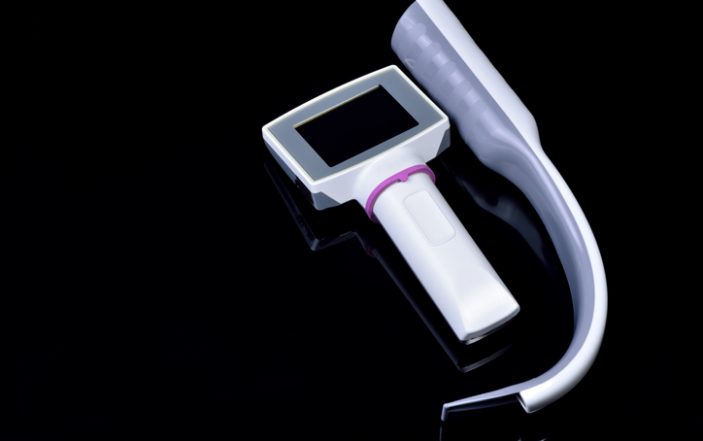Physicians should be utilizing the technique they can readily become proficient at performing.
Dr. Richard Cunningham wrote a piece on why EM physicians should continue to use direct laryngoscopy (DL) and argued that video laryngoscopy (VL) is not superior.
While very well written and thought out, we need to consider the alternative, that VL is the procedure of choice and what we should be learning and using. While I only have a decade of experience as an EM physician either in training or now as faculty at an EM residency, my airway experience dates back much further.
I learned to intubate as a paramedic back in the early 2000s, before VL was becoming mainstream, at least in the rural and suburban departments that I volunteered/worked. When the first video assisted airway devices came on the market for EMS, I found them to be awkward and resisted their use. Time and experience has certainly changed my opinion and approach.
When I think about VL vs. DL and those that argue for continued use of the DL technique and approach, I cannot help but think back to one of my favorite movies — Backdraft, the 1991 firefighting cinematic masterpiece. There is a very short scene in the movie where a banner can be seen in the firehouse that reads “100 years of tradition unimpeded by progress.”
I can’t help but feel that those still arguing for DL as the first approach to intubation are stuck in the past and failing to embrace technology that has made us better, that better helps our patient care.
Before I start getting too much hate mail, let me backup a bit and admit that my view on the use of VL is partially founded in the fact that I spend the vast majority of my clinical time teaching residents. There is no doubt that VL is better for teaching. For the provider that has been practicing for several decades, I do not doubt your skills with DL, but for newer EM providers and certainly those in training, VL is the way.
We also need to agree on a few things before we delve into the reasons and evidence to support the use of VL. First, we are intubating less. This is a good thing for our patients, but not so much for our intubation skills. In 2002, Peter et al, published a meta-analysis in Crit Care Medicine that showed non-invasive ventilation (NIPPV) decreased the need for mechanical ventilation in respiratory failure by 20%.
That was two decades ago, and the use of NIPPV has increased dramatically since then. It is reasonable to extrapolate that the frequency of intubations has decreased. Second, what possibly matters most when intubating in the ED is that we are successful on the first attempt.
Unlike the controlled setting of the operating room where most studies regarding intubation come from, we do not have the same luxuries, with almost all ED intubations being emergent and borderline “crash” intubations. While Dr. Cunningham and I agree on these facts, we differ greatly on the implications.
Because both our practicing and training EM physicians have fewer opportunities to intubate, it is critical that we use the method that can be mastered quickly and comes with the benefits of first pass success and success in otherwise failed airways.
“I fear not the man who has practiced 10,000 kicks once, but I fear the man who has practiced one kick 10,000 times.” —Bruce Lee
For new learners, the skill of VL is mastered much quicker. In 2009, Nouroozi-Sedeh et al. published a study where novice intubators were asked to perform VL and DL intubations and it clearly shows that VL was superior in both first pass success and cumulative success. To further support VL in learners, Sakels et al. studied PGY1-3 EM residents looking at changes in first pass success improvements with experience in 2014.
They showed that PGY1 EM residents had higher rates of first past success using VL compared to DL (74.4% vs. 69.9%) and that with experience, PGY3 EM residents first pass success rate improved significantly more than it did with DL (90.0% vs. 72.9%).
So what do we make of these numbers? VL is easier to learn and our rate of skill acquisition progresses much faster than with DL. Combine this with the diminishing number of intubations, it seems logical that we should be learning and utilizing the technique that we can readily become proficient at performing.
Let’s take this a step further. Scott Weingart used the phrase “DASH-1A” (Definitive Airway, Sans Hypoxemia, Hemodynamic collapse or Hyperventilation on the 1st Attempt) during his 2021 Essentials of EM lecture “The Occasional Intubator” and it sums up how we need to approach all airways.
Essentially, attack the airway with all of your tools the first time. So if VL is your backup device because evidence says it decreases failed airways, then just start there to begin with, from there you can adjust blade size and angle if your go-to runs into issues, but the overall technique stays the same.
We don’t have the luxury of becoming proficient at multiple techniques and our patient might not tolerate more than one attempt, so learn one skill well that works the best. That is undoubtedly with video laryngoscopy.




1 Comment
In my humble opinion, this argument of DL vs VL is getting old and totally unnecessary. We must be proficient in BOTH, because when your VL doesn’t work, DL will save you; and when DL doesn’t get you that cord view, you will use VL. Why can’t we stop this argument? It is silly and taking energy from the important issues that merit true debate. Cool..?